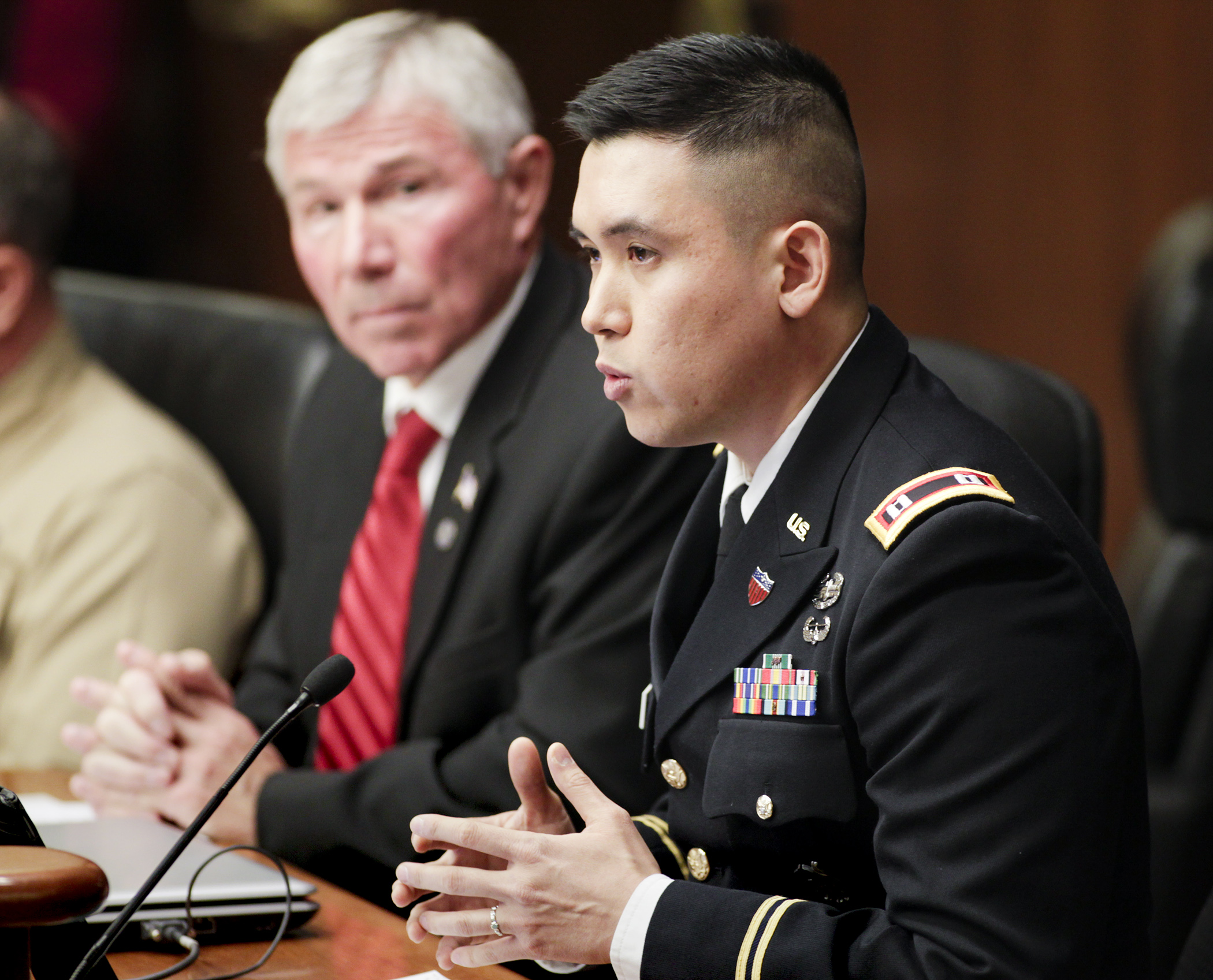How to combat the military recruiting shortage? Require counselors suggest it

Minnesotans tend to avoid conflict. But numbers coming from recruiters show Minnesotans tend to avoid the armed forces, too.
Rep. Bob Dettmer (R-Forest Lake) and two military recruiters told lawmakers Monday the number of military enlistees coming out of Minnesota’s high schools is not only declining, but even getting the military’s message to students has become a problem in some districts.
Dettmer sponsors HF2788, which was approved, as amended, Monday by the House Veterans Affairs Division. It would require school counselors to receive training in armed forces career options and require offering military options as possible post-graduation plans.
The bill, which has no Senate companion, would also require school districts to afford the same access to students that colleges and employers get. It now moves to the House Education Innovation Policy Committee.
Dettmer said his bill would give students another option when considering their future, but some are concerned about the added stress new requirements would place on heavy-laden, limited-resourced high school counselors.
WATCH Committee discussion of the bill
“As an educator, this was never an issue,” Dettmer said. “There’s been some, maybe, pushback in allowing recruiters into our schools. … This bill is about allowing access to these schools that would give students a better idea of what service in our military is about.”
Tied for second-to-last in the country in propensity to serve, only 6 percent of Minnesotans join the military, according to Maj. Andrew Nicholson, commanding officer for the Marine Corps Recruiting Twin Cities. Utah joins Minnesota at that 49th ranking, while only 5 percent of Washington residents join the armed forces.
Neighboring North Dakota boasts 7 percent, while 16 percent of South Dakotans join the military and 13 percent of Wisconsin residents have the propensity to serve, according to Nicholson.
“Minnesota is by and large one of the most patriotic states,” Nicholson said. But “youth don’t want to serve.”
Capt. Young Youn of the U.S. Army’s St. Paul Recruiting Company blamed the declining recruitment numbers on students’ knowledge gap of the military, the media and other effects from criminal offenses to unemployment numbers.
Tom Diamond, a self-described St. Paul resident and veteran, warned that the bill was an unfunded mandate, requiring counselors to take on extra training and taking money away from school districts.
Diamond pointed to other options, like the Peace Corps and various health programs “if we’re talking about public service.” The bill, Diamond said, “requires advocacy for the [Department of Defense] but not any other public role.
“It puts the burden on the school districts,” he said.
Rep. John Lesch (DFL-St. Paul) refuted Diamond’s claims, saying that drawing military recruits from civilian life allows the public to hold the military accountable “and that keeps our nation more accountable and free.”
Related Articles
Search Session Daily
Advanced Search OptionsPriority Dailies
Ways and Means Committee OKs proposed $512 million supplemental budget on party-line vote
By Mike Cook Meeting more needs or fiscal irresponsibility is one way to sum up the differences among the two parties on a supplemental spending package a year after a $72 billion state budg...
Meeting more needs or fiscal irresponsibility is one way to sum up the differences among the two parties on a supplemental spending package a year after a $72 billion state budg...
Minnesota’s projected budget surplus balloons to $3.7 billion, but fiscal pressure still looms
By Rob Hubbard Just as Minnesota has experienced a warmer winter than usual, so has the state’s budget outlook warmed over the past few months.
On Thursday, Minnesota Management and Budget...
Just as Minnesota has experienced a warmer winter than usual, so has the state’s budget outlook warmed over the past few months.
On Thursday, Minnesota Management and Budget...